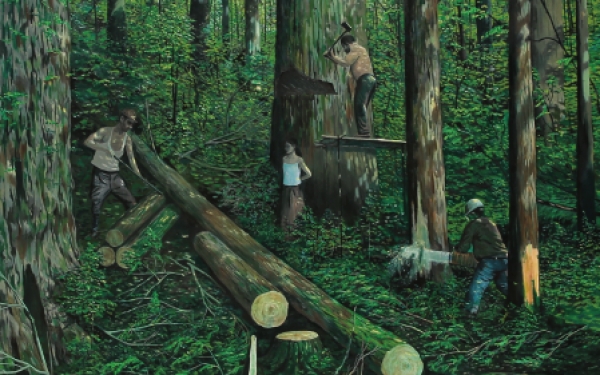전시 EXHIBITION
나는 숲으로 간다
대전문화재단에서 운영하는 시각예술레지던시 대전테미예술창작센터는 7기 입주예술가 강철규, 김철환의 전시를 7월 14일(화)부터 7월 26일(일)까지 개최한다. 올해 2월부터 입주하여 작품활동을 펼치고 있는 강철규, 김철환은 각자의 프로젝트를 진행하고 그 결과를 전시로 발표한다. 7기 입주예술가는 올해 12월까지 멘토링, 전시 등의 지원을 받으며 대전테미예술창작센터에서 작업을 이어나갈 예정이다.
<나는 숲으로 간다>에서 입주예술가 강철규는 개인의 상실과 결핍에 관한 이야기를 풀어낸 유화작업을 선보인다. 그의 그림에는 숲과 물, 그리고 사람이 등장하며 작가는 연출적 요소에 초점을 맞추고 개인적인 경험을 보태어 작업을 완성해간다.
++++++++++++++++++++++++++++++++++++++++++++++++++++++++++++++++++++++++++++++++++++
누군가의 부재가 생겼다. 일차 상실 이후 뒤따르는 상실에 불안이 생겼다. 그것은 마음을 넓고 깊게 팠다. 구멍 벽엔 외로움이 달라붙고 바닥엔 고독이 내려앉았다. 평안을 얻으려고 백지에 초록색 점 하나를 찍었다. 선택엔 고민할 여지가 없었다. 다시 불안하면 두 번째 초록을, 세 번째 초록을. 그렇게 초록이 모여 숲이 됐다. 칠하는 초록에 불안과 평안이 공존한다고 말했고 듣는 누구는 정신병이라 그랬다. 수긍했다. 그림으로 도피했고 더 이상 존재하지 않는 것들을 그려내 마음을 달랬다. 또 어떤 누군가의 부재는 더 큰 불안을 만들었다. 숲은 어두워지고 잔뜩 우거진 모습으로 나타났다. 그곳에 오래도록 머물렀다. 방랑하는 모습 곳곳에 외로움과 고독을 긁어냈다. 잃은 누군가도 만났다. 현실에선 가능하지 않던 것들이 이미지에선 허용됐다.
이미지를 벗어난 곳은 크고 작은 상실의 연속이었다. 조금 전까지 있던 존재는 부재하고 죽음과 이별은 언제나 가까운 곳에서 맴돌았다. 이미지를 떠난 곳에서 허용되는 것이라곤 극히 드물었다. 어느 때엔 일꾼의 모습으로 가공되어 단순한 삶에 상실의 의미를 잃었다. 하루를 살아내지 못했다. 하루씩 죽어갔다. 허용이 가능한 저쪽 세계를 ‘가짜’라고 고백했다. 미움이 차고 증오가 들끓었다. 초록에서 평안만이 사라지는 듯했다. 도피가 아닌 마음으로 숲에 가서 나무를 베고 검은 물에 나를 담갔다. 미움과 증오로.
넓어진 구멍으로 차는 공허를 메워 준 것이 글이었다. 소설을 펴냈다. 글에도 구멍 뚫린 사람들과 구멍을 뚫는 일이 자주 나타났다. 다만 글은 그림보다 허용 가능한 것들이 많다. 글에서 긴 호흡을 내쉬다 보면, 가공된 인물의 입과 몸짓을 빌려 존재의 불안을 평안으로 이끄는 것이 가능했다. 넓어진 구멍이 좁아지는 것은 아니다. 또 다른 가짜로 공허를 메운 것이다. 몸이 닿는 세계와 손끝을 빌리는 세계가 꼬리를 문다. 불안은 몸집을 키워 제자리로 돌아간다. 다시 가짜를 그린다. 사이가 생기고 또 다른 가짜를 써서 메운다. 가짜를 내세워 존재의 의미를 뒤따르는 것에 거창한 의도는 없다. 탐닉도 없다. 한 인간 나름의 생존 방식이 그렇다.
---------------------------------------------------------------------------------
벌목: 나는 숲으로 파괴한다
강철규 작가가 대전테미예술창작센터에서 선보이는 전시 <나는 숲으로 간다>는 복합적인 의미를 지니고 있다. 이 글은 그 다층적인 의미들의 타래를 읽는 것으로 작가의 세계를 이해할 수 있으리라는 믿음으로 전개해보고자 한다.
한 장의 그림으로부터 시작해보자. <벌목>이라는 제목의 그림이다. 눈앞에 숲이 펼쳐진다. 깊숙하고 울창한 숲이다. 빛이 새어 들어오는 틈이 없을 정도로 나무들의 키가 크다. 짙푸른 그늘 사이로 나무들이 빽빽하게 서 있고 녹음이 짙푸르게 우거졌다. 늪과 호수에 비치는 그림자도 모두 녹색이다. 일꾼 네 명이 나무를 베고 있다. 장정보다 큰 나무들이 전기톱에 의해 베어지고 쓰러진다. 잘린 통나무가 비스듬히 숲을 관통하고 있다. 숲은 천천히 무너지고 있다. 숲은 앞으로도 계속 함락될 것이다. 벌목에 의해. 숲의 정적을 깨는 전기톱 소리가 귀에 들리는 듯하다. 도끼를 들고 나무를 베는 한 일꾼과 나무 그늘 아래로 한 여자가 보인다. 그녀는 흰 민소매 티셔츠를 입고 뒷짐을 진 채 나무에 기대 있다. 나무 그늘 속으로 얼굴이 감추어져 있어 표정을 읽을 수가 없다. 추측컨대 체념의 표정을 짓고 있을 것이다. 등장인물과 관객은 모두 어떤 ‘상실의 상황’을 목도하고 있고, 그녀의 힘으로 숲의 파괴를 멈출 수 있는 방법은 없는 것처럼 보이기 때문이다.
<벌목>은 정적(情的)이지만 확실한 서사가 있는 작품이다. 깊고 깊은 산골짜기에서 벌목하는 일꾼들과 방관하는 여자를 그린 이 작업은, 그림 속 전후 상황을 유추하고 상상하게 만드는 스토리의 힘이 있다. 이런 ‘서사성’과 ‘스토리 텔링’은 강철규 작가가 가지고 있는 텍스트 언어, 좀 더 정확히 표현하자면 ‘문학적인 감각’으로부터 기인한다. 작가는 시각적인 언어로 그림을 표현하는 시각예술가면서 소설을 쓰는 문학 작가이기도 하다. 그는 두 권의 소설 『계절이 바뀌는 계절』과 『Eva』를 출간한 바 있다(독립출판). 이 소설은 다시 한 명의 문학 작가에 빗대어 있는데, 무라카미 하루키의 ‘전지적 작가의 의식의 흐름’에 충실한 내면적 이야기 쓰기방식과 정념을 따르고 있다.(그의 소설이 무라카미 하루키의 소설에 영감을 받았다는 사실은 작가가 직접 밝힌 사실이다.) 예를 들어 『계절이 바뀌는 계절』은 주인공인 ‘나’가 전지적 작가 시점으로 의식의 흐름에 따라 시공간이 구성되며, 하루키의 소설 『노르웨이의 숲』을 관통하고 있는 정념인 ‘죽음’과 ‘상실’의 냄새를 맡을 수 있다. 작가의 2019년 작업 <기즈키의 등을 보며>, <나오코의 숲>,
<나는 숲으로 간다>의 부제는 ‘Anxiety : Until one green becomes woods’ 이다. 불안(anxiety)은 강철규 작가가 작업을 시작하게 된 계기이자 동시에 오롯이 작가의 작업 그 자체로 존재를 증명하는 원동력이다. 작가 노트에서 밝힌 대로, 작가는 유년 시절 겪었던 분리불안 심리를 해소하고 결핍을 극복하고자 그림을 그리기 시작했다. “상실로 시작한 작업에 평온과 불안이 공존한다”라는 작가의 말은 본인의 작업에 관한 가장 가까운 변론이다. 녹색은 작가의 시각언어를 대변하는 가장 상징적인 컬러다. 마음이 불안할 때마다 찍던 녹색의 점이 모여 풀이 되고, 나무가 되고, 숲이 되고, 문학세계의 재현이 되었다. 점점 더 깊은 숲 속으로 들어가면서 자아를 대변하는 인물과, 타인을 대변하는 인물들도 함께 동반하게 되었다. (
강철규 작가에게 녹색은 평화와 불안이 공존하는 색이다. 불안으로 시작한 초록의 덧칠은 평화를 찾기 위한 숲의 여정으로 이어졌다. 즉, 초록색은 작가에게 있어 작업의 원동력이면서 시각적인 디제시스(diegesis: 스토리가 전개되는 시공간 또는 가상의 인물들이 살고 있는 허구화된 세계를 이르는 말)로의 몰입을 증명하는 과정이자 결과물이다. 하지만 작업을 완성하고 숲으로 들어가는 과정이 작가의 결핍을 소멸시키지는 않았다. 작가에게 있어 초록은 결핍의 시각적인 언어 발화이자, 평온의 상징이다. 현실과의 연결고리를 매개하는 티켓이다. 오히려 작가가 두려워하는 것은 ‘회색’의 상태, 작가의 자아와 표현욕구가 억제된 무음(soundless)의 정적 상태이다. 그런 의미에서 ‘나는 숲으로 간다’는 창작에 임하는 작가의 복합적인 의미와 감정을 덤덤히 서술하는 메시지이다. 한편 이번 전시의 대표작 <벌목>은 작가의 다음 작업 방향을 암시하는 일종의 선언문이다. 그동안 작가가 그렸던 숲의 디제시스는 깊은 산골짜기에서 사람들이 고독을 느끼거나 몽환적인 활동을 하는 형상으로 표현됐다. 그러나 이제는 무기력과 상실감이 쌓아올린 숲을 함락하고 다음의 작업으로 도약하겠다는 작가의 의지가 읽히는 작업으로 이 전시는 선언하고 있다.
조숙현 (전시기획자 / 미술평론가)
Logging: I destroy with forest
Kang Cheol-Gyu’s exhibition in Artist Residency TEMI,
Let me start with the painting titled
The subtitle of
To Kang, green represents both tranquility and anxiety. When he started to paint over using green with anxiety, it led to a journey into the forest to search for peace. In other words, green is a driving force for his art work, and also it is a process and outcome that proves his immersion into visual diegesis (a term that refers to time-space where story unfolds or fictional world where virtual characters live. However, the process that the artist completed his work and went into forest did not resolve his deficiency. To him, green is the initiation of deficiency into visual language and symbol of tranquility. It is a ticket that serves as a link with reality. What he is afraid of is the state of ‘grey.’ It is static and soundless state where the self and desire for expression are suppressed. In that sense, ‘I go into forest’ is a message that calmly describes his complex meaning and emotions for artistic creation.
Cho Sook-Hyun (Exhibition curator / art critic)
- 기간
- 2020-07-14 ~ 2020-07-26
- 관련행사






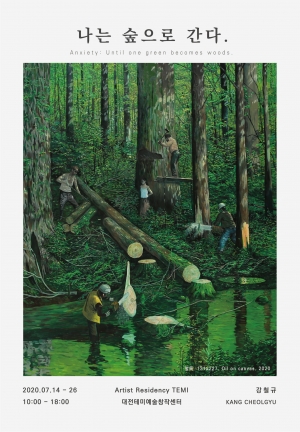
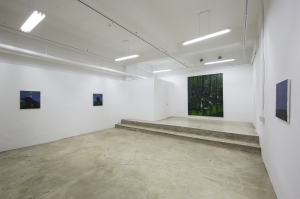
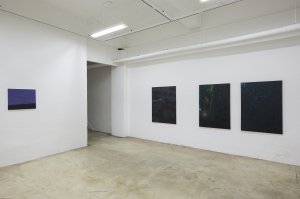
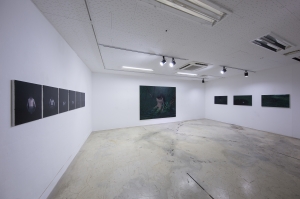
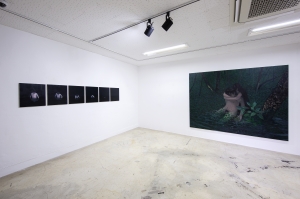
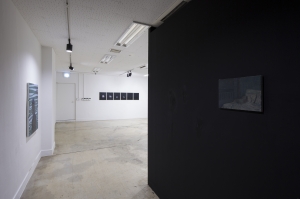
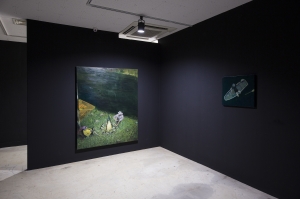
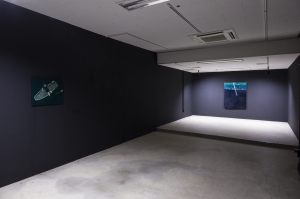
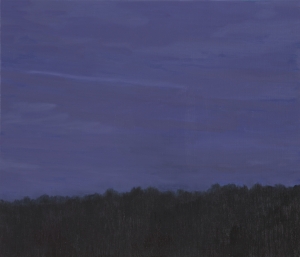
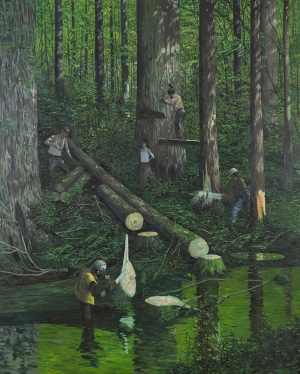
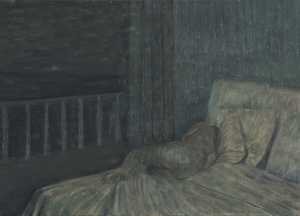
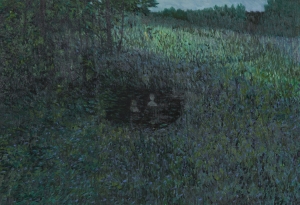
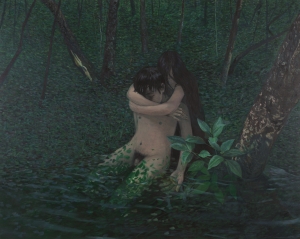
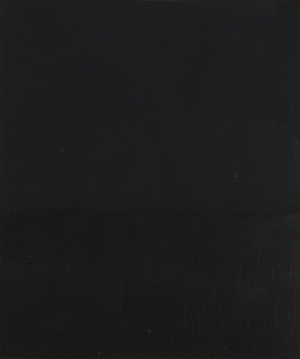
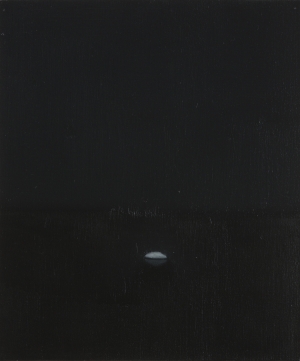
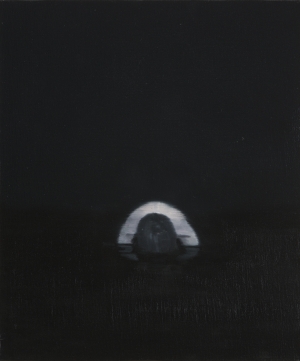
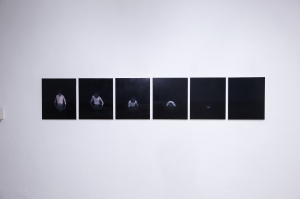
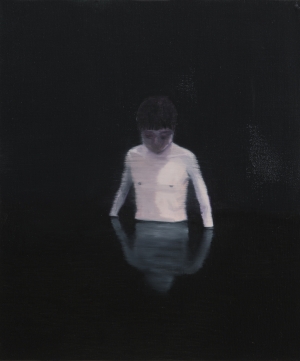
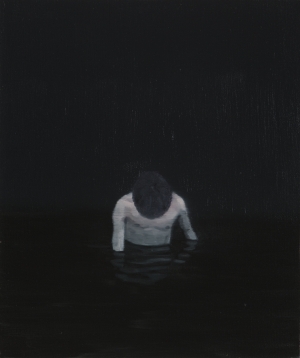
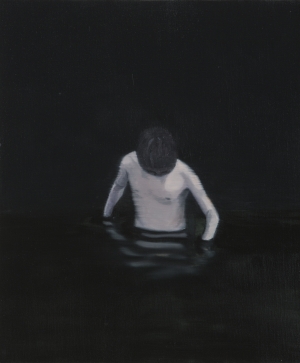
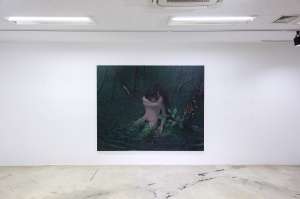
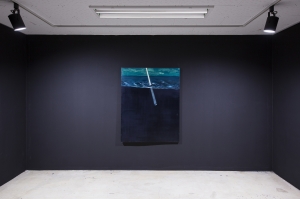
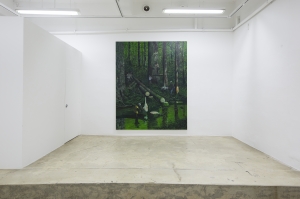
![강철규 [나는 숲으로 간다]](/image/archive/thmsmall/youtubethumb.php?thm=2252)






